Responding to natural and man-made disasters, humanitarian aid agencies provide needed resources: food, clothing, blankets, and shelter. But when markets are still functioning, cash may be the best aid, giving people dignity and flexibility in meeting their needs. Enter mobile money. Instead of the complex problem of moving currency, aid agencies using mobile money systems have found that mobile money systems offer a promising way to deliver aid with speed, precision and flexibility even in challenging environments.
This article summarizes the experiences of agencies in Kenya, Niger, Haiti, Cote d’Ivoire and Philippines, and reviews the benefits and challenges of using mobile money systems in humanitarian response. An intriguing benefit is the use of the crisis to introduce people to financial systems, which, if people continue to use, will result in the benefits of aid going well beyond the immediate crisis.
In the humanitarian response to the Indian Ocean tsunami in 2004, some aid agencies provided assistance in the form of cash grants, in addition to food, clothing, blankets, and shelter. Markets were still functioning, so people affected by the disaster could purchase the things they needed. Recipients welcomed these cash transfers and appreciated being able to make their own decisions about what to buy. Since then, there has been overwhelming evidence from many humanitarian relief efforts around the world, that cash transfers give people more dignity and flexibility in meeting their day-to-day needs.
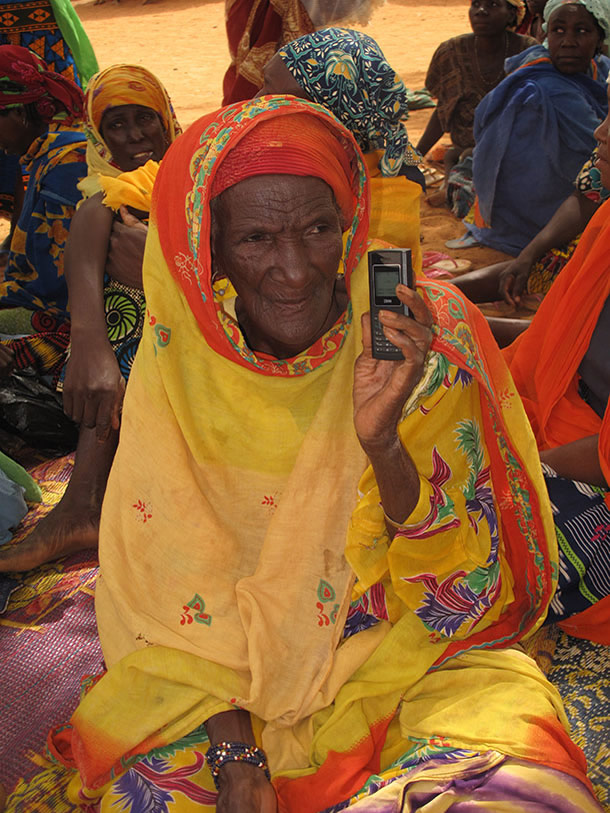
The Challenge of Cash
Humanitarian aid provides assistance to those affected by crises including natural and man-made disasters. The movement of large amounts of cash to isolated or insecure environments presents obvious logistical, operational, and security challenges. The area of a disaster is chaotic, and any banking infrastructure that did exist may have disappeared. In many of the poorest countries, people who require humanitarian aid are many miles from the nearest bank. Counting out and delivering cash to people by hand is time consuming and costly. There is a risk that cash may get stolen or go missing before reaching those for whom it is intended. There is also a risk that delivery points, or recipients travelling home after collecting their cash, will be targets for robbery.
The Rise of Branchless Banking
Recent advances in mobile technology in low income countries are changing this picture as “branchless banking” services have appeared. These services allow aid agencies to transfer financial value directly, immediately, and electronically to the accounts of many recipients through pre-paid debit cards, chip-enabled cards, and mobile money systems on mobile phones. Of these, mobile money systems, which enable payments to be transferred from one person or organization to another through mobile phones, are especially important given the rise in mobile phone penetration across Africa and Asia. Users don’t need a bank card. Instead, they use their phone to store value in a “mobile wallet,” exchange this stored value for cash through accredited agents, or transfer value between users. They can also purchase mobile air time or pay for goods.
Since the emergence of the M-PESA mobile money product developed by the Kenyan mobile network operator Safaricom just five years ago, a variety of mobile money systems have emerged in eighty low or middle income countries in Africa, Asia, and Latin America. Services are well established in Kenya, Rwanda, Uganda, and the Philippines, and are becoming available in Nigeria, Niger, Haiti, Zimbabwe, Afghanistan, Pakistan, Somalia, and the Democratic Republic of Congo.
For the aid agencies, these new opportunities to deliver aid without the need to handle and transport cash may solve logistical and security challenges, so that cash can be delivered more efficiently and cost effectively than in-kind aid. Importantly, this can be done without the need to physically move or count hard currency, with all the costs and risks that this involves. Recipients no longer need to travel to or queue at a distribution point. However, aid agencies also work with arguably the poorest people in the world, many of whom may lack awareness of, or previous experience with, mobile technology, and who live in isolated communities with limited infrastructure. In this context, relying on mobile technology could also become an additional burden for the agencies, rather than a tool for improving the effectiveness of delivering aid. With the rise of mobile money, a number of international aid agencies have run trials using these services to provide cash transfers to people affected in recent emergencies.
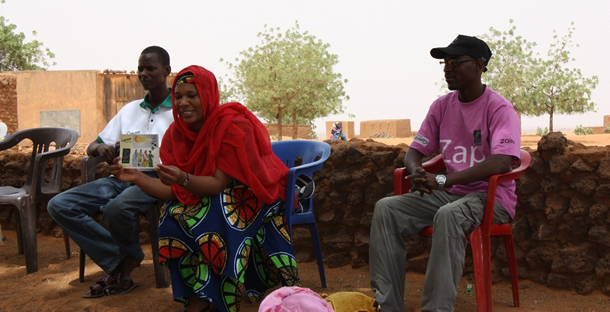
Evaluating the Use of Mobile Money Systems to Deliver Aid
In 2011, the Cash Learning Partnership (a consortium of Oxfam, the British Red Cross, Save the Children, Action Against Hunger, and the Norwegian Refugee Council) commissioned the international aid agency, Concern Worldwide, to investigate the use of emerging electronic payment systems for cash transfer programs in humanitarian contexts. The research focused on experiences of aid agencies using mobile money systems to deliver cash-based assistance to households in Kenya, Niger, Haiti, Cote d’Ivoire, and the Philippines.
There were numerous benefits and challenges of using mobile money systems experienced by the aid agencies. The most important benefits are:
- Improved security for staff and recipients of aid
- Speedier delivery of aid, with fewer “opportunity costs” for recipients
- The introduction of aid recipients to mobile phones and banchless banking are benefits that last beyond the emergency
With the adoption of new ways of working and the growing pains associated with an emerging technology, there are inevitable glitches. Agencies working in complex emergency zones, and with the poorest sections of society, also face challenges supporting electronic cash benefits, including:
- Poor network and infrastructure
- Low literacy and lack of experience with technology among aid recipients
- Lack of experience with mobile money in the humanitarian community
Improved Security
Agencies agree that a major benefit of using mobile money systems is the reduced opportunity for fraud or for diversion of intended funds. It is easier to track payments, which can reduce corruption and increase confidence that the right amount of money ends up in the hands of those for whom it was intended. Agencies can reconcile accounts through web-based systems that designated staff can access in order to view the processing of payments and transaction expenditures.
In a mobile money system, much of the risk of handling cash is fielded by the service providers and their network of agents, rather than by the aid agency. These organizations already have the systems and processes in place to manage transactions quickly, securely, and efficiently. For the mobile network operators and banking institutions, aid programs present opportunities to reach a previously untapped market, the so-called unbanked. Service providers tend to offer aid agencies preferential rates, in recognition of the value of the humanitarian market.
Using mobile money systems also increases feelings of personal security. This is an important factor for both aid agency field staff and recipients, particularly in areas notorious for robbery. Cash transfer recipients using mobile money systems in poor urban areas are satisfied that their money can be kept securely on the phone. Receiving money this way is also more discreet than publically queuing outside the bank, so it is considered less likely to be stolen.
Reduced Opportunity Costs
The research provides some evidence from Haiti and Niger that recipients of aid can access cash transferred to them via mobile money more quickly than they can access cash transferred by hand.
This reduced opportunity cost can prove very significant to poor households where every hour of the day can be important for earning a living. This benefit depends on a well-developed mobile money agent network with sufficient cash funds—emergency situations can create some difficulties for small-time agents with a small cash flow. Mobile money systems also require reliable connectivity. Poor signal strength can affect the use of mobile money systems in more rural areas.
Overcoming Low Literacy
Both reading and technical illiteracy remain commonplace for large numbers of people who might benefit from cash transfer programs. The research shows that the lack of previous exposure to mobile technology can present issues for some people. Operating the system requires entering a PIN number and keying in or following simple commands. In Niger, women new to mobile phones needed support in order to visit the mobile money agent and to collect their cash. In Haiti, aid agencies met this challenge by encouraging illiterate recipients to find a relative or friend to help them.
Despite these challenges, aid agencies report that cash transfer recipients overwhelmingly prefer the mobile money process to the alternative of manual transfers. We should not underestimate the feelings of self-respect and confidence that come from putting mobile technology into the hands of people for the first time.
Research conducted in 2011 on a Concern Worldwide cash transfer program in Niger, suggests as well, that the use of mobile money may allow women to have greater control over the spending of the cash transfer, and encourage them to engage more in household expenditure decisions.
Older people face several challenges when using mobile money. They have often had the least exposure to mobile technology, are more likely to have dexterity or visual disabilities, and may find traveling long distances to visit the mobile money agents more of a burden. Despite this, aid agencies said these factors would not deter them from introducing older people to mobile money systems.
New users registering for a mobile money account must generally present a valid form of identification to comply with national banking regulations. Many of the poorest people do not have formal ID, and people affected by a disaster have often lost theirs, making them ineligible for mobile money services. The banking regulators may reduce these requirements in light of humanitarian needs. In Haiti, for example, those without ID can register for a “mini-wallet,” that provides a mobile money account with a restriction on how much money can be stored in the account.
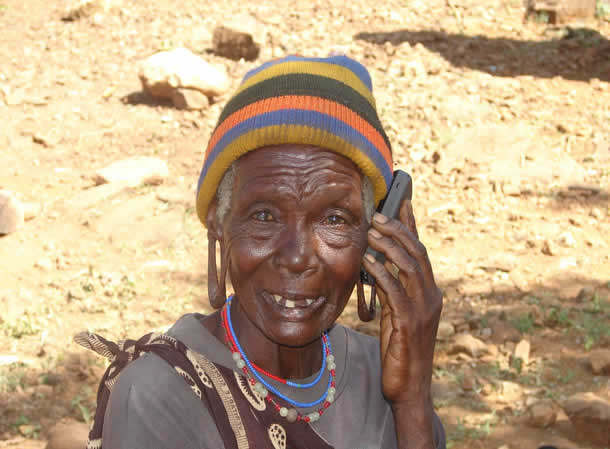
Balancing the Costs
Research shows that while the costs of providing phones and chargers can mean higher initial set-up costs for aid programs using mobile money services than those for hand-delivered cash transfer programs, mobile money services allow aid agencies to realize significant cost efficiencies over time. Although there is little direct cost comparison evidence available, the 2011 research in Niger shows that over just a few months, the mobile money transfer system becomes more cost-effective than cash delivered by hand.
Overcoming Organizational Barriers
It’s not just recipients whose world changes with the introduction of mobile money. Aid agencies need to devote time and resources for new activities that mean they are able to plan and implement these systems in the rapid response required following a disaster. They need to overcome barriers around sharing information and experiences of such technological innovations with other aid agencies. They have to rid themselves of the wariness of the risks of involving private sector actors in the humanitarian sphere. Senior decision makers in humanitarian organizations may perceive new technologies as being too risky or expensive and prevent further investment or adoption. Finally, the regulatory environment of the banking sector can create legislative barriers to growth of mobile money services in some countries.
Looking Beyond the Emergency
One exciting finding from the research is evidence that using mobile technology and mobile money services as part of humanitarian aid has the potential to create benefits for these people which are felt long after the cash transfers provided by the aid agency have ceased.
Continued Use of Financial Systems
For many poor households, this introduction to mobile money is also their introduction to the formal financial system, and access to financial services is recognized as a critical factor in helping people escape from poverty. A recent Consultative Group to Assist the Poor (CGAP) Focus Note found that at eight different providers, mobile banking services were the first financial services for 37 percent of customers (or an average of 1.4 million people each).
Unfortunately, simply introducing poor households to mobile money systems in an emergency does not mean they will automatically continue to use them for managing their finances after the disaster. In Niger there was little use after the disaster. In contrast, in urban settlements in Nairobi, where people generally are more familiar with mobile phones and mobile money, there was more use after the cash transfer program had completed. Ensuring the continued use of mobile money by aid recipients post-disaster may require a longer term investment to build people’s trust in, and ability to use, these new financial systems.
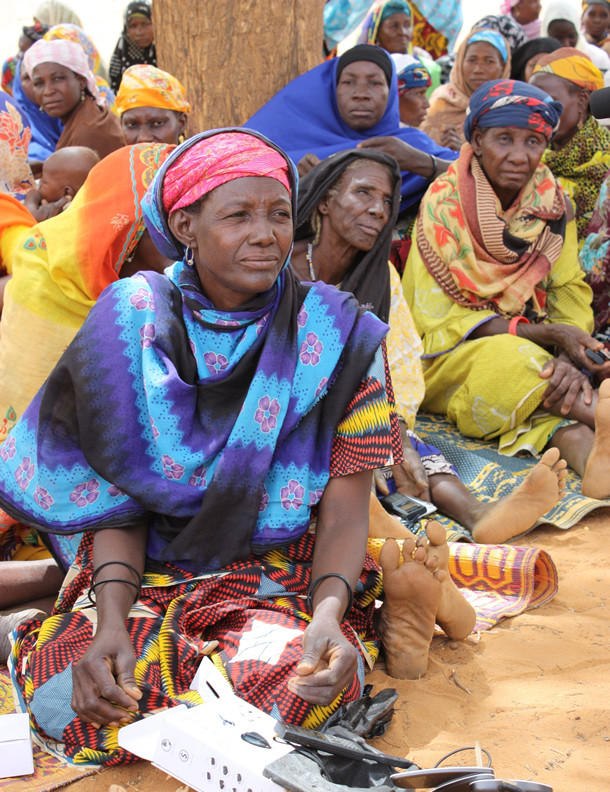
Better Communication Channels
A second and more obvious broad benefit is the access these people now have to new channels of information and communication through the mobile phone. Aid agencies are increasingly using the mobile phone to ensure households can access vital information during emergencies. Initiatives include:
- Call center hotlines such as those operated by Red Cross in Haiti after the earthquake
- Automated voice messaging systems
- Mass text alerts such as the health messages transmitted by Red Cross to subscribers on the Voila mobile network following the Haitian earthquake
- Feedback and complaint response systems to improve accountability and effectiveness of aid programs, including Oxfam in Haiti and Concern in Niger
Each of these programs has been able to increase the speed and efficiency with which agencies can communicate vital information to dispersed populations.
There remain issues to address, however. For example, any information sent through mass messaging must be clear and accurate to prevent confusion or create distrust of messages. In addition, if the agency or provider does not cover the cost of the calls, the expense may be prohibitive for people affected by the disaster. The research recommends that these mobile communications tools complement, rather than replace, traditional means of communication during humanitarian aid, since face-to-face contact with communities is critically important in humanitarian work.
Help from More Sources
The use of mobile money systems and the involvement of mobile network operators in humanitarian aid has made possible the increasing involvement of the wider national population and diaspora communities in humanitarian efforts.
In response to the recent crisis in the horn of Africa, Safaricom launched their Kenya for Kenyans campaign, which allowed MPESA customers to text donation pledges. Before the end of 2011 this raised over 150 million Kenya Shillings in over 500,000 pledges.
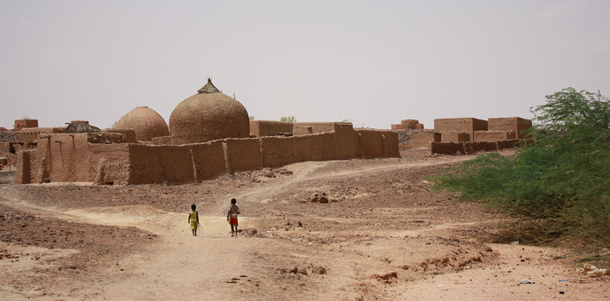
The Future
All aid agencies using mobile money systems have found that they offer a promising way to deliver aid with speed, precision, and flexibility even in challenging environments. And, mobile money services are going to continue to develop and expand in low income and crisis-prone countries where aid agencies engage.
Right now, only a handful of initiatives are using this technology at what could be considered to be a large scale, and no aid agency is using mobile money systematically for all of their cash transfer work. If aid agencies are serious about realizing the potential of mobile money to deliver humanitarian aid to the poorest, rapidly, and at a significant scale, they will need to overcome the barriers to wider adoption through coordinated research and action.
Aid agencies and donors must work with service providers to support the extension of mobile networks and mobile money systems to more areas affected by crisis.
The humanitarian community should advocate for improvements in the regulatory environment for mobile money where this is needed.
In places regularly affected by crises, agencies should be better prepared, by implementing processes and contracts before a new crisis occurs.
Humanitarian donors can create incentives for both mobile money service providers and for aid agencies to coordinate wider adoption of these systems.在应对自然和人为灾难时,人道援助机构会提供所需的资源:食品、衣物、毯子和庇护场所。但如果市场仍在运转,现金可能是最好的救助,它使人们能够有尊严且灵活地满足自己的需求。救助机构发现,使用移动货币系统避免了转移现金的复杂问题,提供了一种很有前景的方式来快速、精确且灵活地提供救助,即使是在困难的环境下也是如此。
这篇文章概括介绍了肯尼亚、尼日尔、海地、科特迪瓦和菲律宾相关机构的经验,并分析了人道救助时使用移动货币系统的优点和难点。一项耐人寻味的益处是,在危机时刻向人们推行金融系统,如果人们能继续使用该系统,在最危急的关头过后,系统仍能继续发辉作用,带来持续的救助效益。
文章全文为英文版자연재해와 인간이 초래한 재해에 대응하기 위해 인도적 원조 기구는 필요한 자원을 제공합니다. 바로 음식, 옷, 담요 및 거처 등을 의미합니다. 그러나 시장이 정상적으로 작동하는 경우, 사람들에게 품위 그리고 그들의 요구를 충족할 수 있는 유연성을 주는 현금이 아마 가장 좋은 원조일 수도 있습니다. 모바일 머니를 도입하십시요. 돈을 이리저리 옮겨야 하는 복잡한 문제 대신에 모바일 머니 시스템을 사용하는 원조 기구들은 모바일 머니 시스템이 도전적인 환경에서도 원조금을 신속하고 정확하며 유연하게 전할 수 있는 순조로운 방법을 제공한다는 사실을 알게 되었습니다.
본 논문은 케냐, 니제르, 아이티, 코트디부아르 및 필리핀 등의 단체의 경험을 요약하며, 인도적 대응 시 모바일 머니 시스템을 사용하는 것에 대한 혜택과 문제들을 검토합니다. 흥미있는 혜택으로는 위기 상황을 이용하여 사람들을 금융 시스템에 인도하여, 만약 이들이 계속 이용한다면 원조의 혜택이 당면한 위기를 뛰어넘는 결과를 낳습니다.
The full article is available only in English.Como resposta a desastres naturais e provocados pelo homem, agências de ajuda humanitária fornecem os recursos necessários: alimentação, roupas, cobertores e abrigo. Mas quando os mercados ainda estão funcionando, o dinheiro pode ser a melhor ajuda, proporcionando às pessoas dignidade e flexibilidade no atendimento de suas necessidades. Aqui entra o dinheiro móvel. Em vez do problema complexo de movimentar moeda, as agências de auxílio que usam sistemas de dinheiro móvel descobriram que esses sistemas oferecem uma forma promissora de fornecer ajuda com agilidade, precisão e flexibilidade, mesmo em ambientes desafiadores.
Este artigo resume as experiências de agências no Quênia, Níger, Haiti, Costa do Marfim e Filipinas, e analisa os benefícios e desafios de utilizar sistemas de dinheiro móvel como resposta humanitária. Um benefício intrigante é o uso da crise para introduzir pessoas aos sistemas financeiros, que, se as pessoas continuarem a usar, resultará nos benefícios da ajuda indo muito além da crise imediata.
O artigo completo está disponível somente em inglês.自然災害や人為的災害に対応する際、人道的支援組織では、食料、衣類、毛布、宿泊所といった必要な資源を提供する。しかし、まだ市場が機能し続けているなら、被害に遭った人々に尊厳を与え、ニーズに柔軟に対応できる点で、現金が最善の支援法と言えるだろう。モバイルマネーによる送金がその例だ。現金を移動するための複雑な問題に対応する代わりにモバイルマネーシステムを使用している支援組織では、そのシステムがスピーディー、的確、かつ柔軟な支援を行うのに有望な方法だと判断している。
この記事では、ケニア、ニジェール、ハイチ、コートジボワール、フィリピンでの支援組織の体験をまとめ、モバイルマネーシステムを人道的支援対策として使用する利点とその課題について検討している。興味深い利点は、危機的な状況で人々が金融システムを使用するようになれば、そのまま使用が継続し、直面する危機が収まった後も長期的な支援の恩恵が継続できると見込まれることである。
原文は英語だけになりますEn respuesta a desastres naturales y causados por el hombre, las agencias de ayuda humanitaria proporcionan los recursos necesarios: alimento, ropa, mantas y refugio. Pero cuando los mercados siguen en funcionamiento, el dinero en efectivo puede ser la mejor ayuda, porque le da dignidad y flexibilidad a la gente para satisfacer sus necesidades. Veamos qué es exactamente el dinero móvil. En lugar del complejo problema que significa mover dinero, las agencias de ayuda que utilizan sistemas de dinero móvil han encontrado que estos sistemas son una forma prometedora de hacer llegar la ayuda con agilidad, precisión y flexibilidad, incluso en entornos problemáticos.
En este artículo se reseñan las experiencias de agencias en Kenia, Nigeria, Haití, Costa de Marfil y Filipinas, y se analizan los beneficios y los desafíos de utilizar sistemas de dinero móvil en la respuesta humanitaria. Un beneficio paradójico es el uso de la crisis para que la gente conozca los sistemas financieros que, de seguir siendo utilizados, redundará en que los beneficios de la ayuda trascenderán la crisis inmediata.
La versión completa de este artículo está sólo disponible en inglés.
